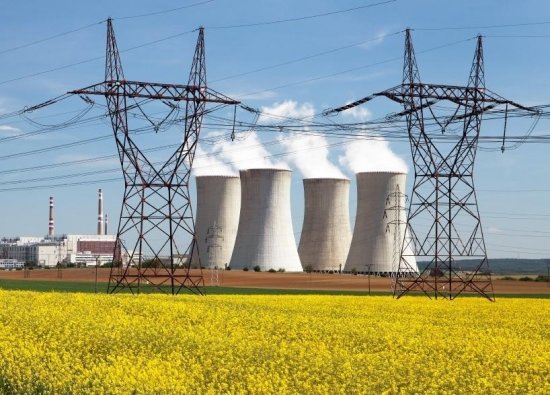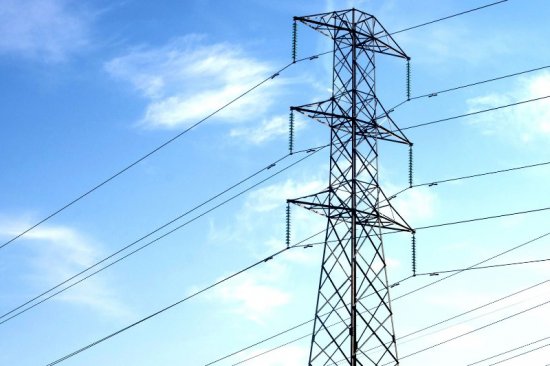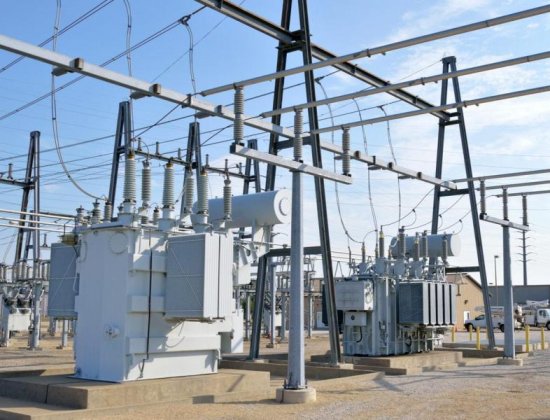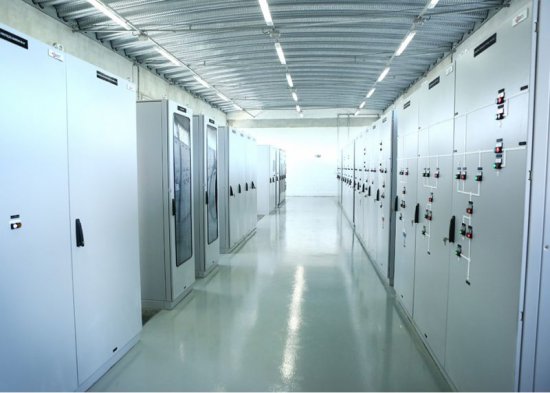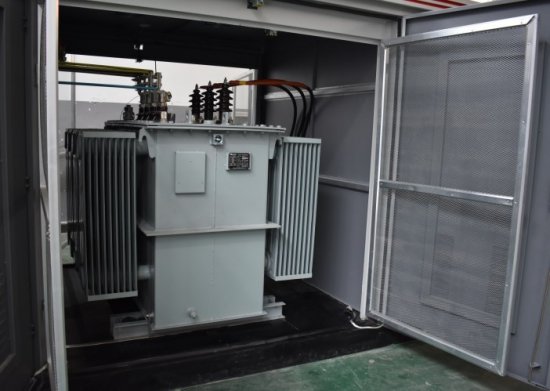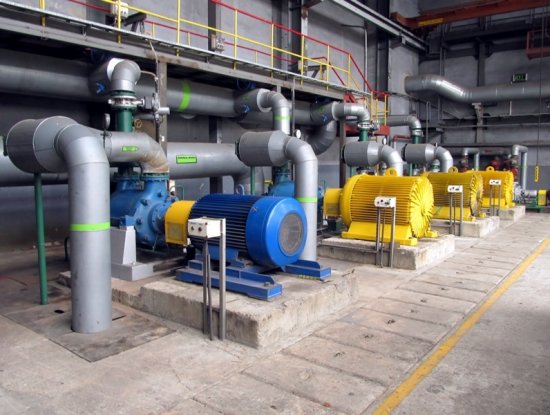How is electricity supplied to businesses and other consumers?
The transformation of the potential energy of various types of fuels (gas, peat, coal, shale, petroleum products, etc.), the energy of the atom, as well as the energy of the sun, water, air currents (wind) into electricity occurs in power plants… Primary engines (thermal, hydraulic, etc.) are installed at the station, which rotate three-phase alternating current synchronous generators.
Electric stations They represent a type of enterprise whose products are electrical energy. The amount of electricity generated at any moment in time is determined by the needs of the user and the need to cover the resulting energy losses during its transmission from the power plant to electrical receivers (electric motor, electrolysis, heating or lighting installations, etc.).
For the transmission of electrical energy from the station, its distribution among consumers, as well as on their territory — to individual electrical receivers, they serve Grid electricity… The transfer of electrical energy from the power plant to consumers is accompanied by heating of the wires and, therefore, a loss of part of the energy generated by the station.
The greater the distance from the power plant to the consumer, i.e. the longer the line and the greater the transmitted power, ceteris paribus, the greater the relative power loss. To reduce energy losses in the wires It is recommended that its transmission be carried out with high voltage.
Generators with a voltage of 6.3 are installed in power plants; 10.5; 15.75; 18 kV. The specified voltages, although high, still result in significant line losses for the transmission of large powers over long distances.
To get a higher voltage at the stations, set transformersincrease the generator voltage to 38.5; 221; 242; 347; 525; 787 kV (see all rated voltage values here — Nominal voltages of electrical networks and their areas of application).
At these voltages, the energy is transferred to the center of its consumption, where transformers are installed that reduce the voltage to 35 — 6.3 kV. At such lower voltages, they distribute energy to individual businesses and other consumers.
See also —How electricity flows from power station generators to the grid
In enterprises, transformers are installed that reduce the voltage to 400 V, where the energy is distributed to individual electrical receivers: motors, lighting and other installations.
Economically feasible is the voltage that corresponds to the lowest capital and operating (total) costs.To improve power efficiency and reliability, electrical systemsuniting several nuclear power plants, hydroelectric power plants, thermal power plants, RES for joint (parallel) work on a common network.
All elements of the energy system are united by the general processes of production, distribution and consumption of energy, under the same technical and organizational leadership and control. Typically, such systems include not only electrical, but also heating networks and consumers of thermal energy.
The path of electrical energy from the power plant to consumers:
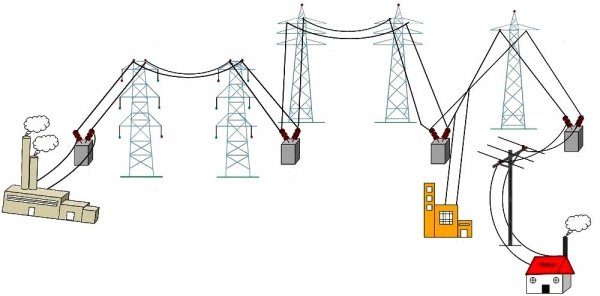
Thus, the power supply system consists of power plants, electrical networks (cable and overhead), step-down and step-up transformer substations.
Each power system is subject to the following requirements:
-
conformity of the power of installed generators and transformers with the maximum power of electricity consumers;
-
sufficient line capacity;
-
reliability, providing uninterrupted power supply;
-
high power quality (constant voltage and frequency);
-
safety and ease of use, in particular the simplicity and clarity of the diagram;
-
profitability.
Interruptions in the power supply of enterprises lead to losses related to equipment damage, disruption of the technological process, product damage, downtime of workers, etc. Thus according to the degree of need for uninterrupted power supply, the loads of industrial enterprises are divided into three categories.
1.Loads, power outages that are dangerous to human life, can cause equipment damage, mass product defects or prolonged disruption of a complex technological process, as well as disruption of the normal life of the population of a large population city.
2. Loads, interruption of power supply to which causes significant underdevelopment of products, inactivity of workers, machines, mechanisms and industrial transport.
3. All other loads, eg non-series workshops, auxiliary stores, warehouses and machinery.
Loads of the first category must be supplied by two independent sources of energy, each of which would fully supply the specified loads with electricity— Power reliability categories.
All electrical installations are divided into electrical installations with a voltage up to 1000 V and electrical installations with a voltage above 1000 V. The nominal values of the working (i.e. at the terminals of the electrical receivers) voltages and voltages at the terminals of the sources are standardized. Look -Influence of voltage deviations on the operation of electrical receivers
So, the enterprise is supplied with electricity from external sources of electricity (power systems, individual city or regional power plants) through high-voltage power lines, from transformer substations. The latter are usually located on the premises of enterprises. Their capacity is determined by the installed power of the electrical receivers and varies from 100 kVA to 10-30 thousand kVA.
The power supply of enterprises can be divided into external and internal, which has its own specific schemes and other characteristics.
Under external power supply imply a system of networks and substations from a power source (power system or individual district station) to step-down transformer substations of the enterprise… The transmission of energy in this case is carried out by an underground cable or an overhead line at voltages of 6.3; 10.5; 35 kV.
With relatively small installed capacities (up to 300 — 500 kW), in most cases a common substation with two or three transformers is built on the territory of the enterprise, which reduce the voltage from 6 — 35 kV to 400/230 V.
In large enterprises, where there are large scattered electrical loads, deep bushings are made for high voltage. At the same time, the high voltage line coming from the power system is led deep into the territory of the enterprise where they build high voltage central distribution point — CRP, which is usually combined with one of the workshop substations.
In other large workshops of the same enterprise, individual substations… They are connected to the CRP and to each other through a high-voltage line. Such a scheme significantly reduces the length of low-voltage installations in the installation, which leads to the saving of non-ferrous metals and electricity.
Internal power is called a system for the distribution of electrical energy in the workshops of the enterprise and on its territory. For most electricity consumers in enterprises, electricity is distributed at a voltage of 380/220 V.Large electric motors with a power of 100 kW or more are usually installed at a voltage of 6 kV and connected to the high voltage buses of a transformer substation.
Total power of transformers or generatorsinstalled in substations or stations of enterprises must be selected so that all electrical receivers are supplied with energy in the required amount during the entire time of their operation, taking into account energy losses in electrical networks.
See also in continuation of this topic:Power system, networks and users

